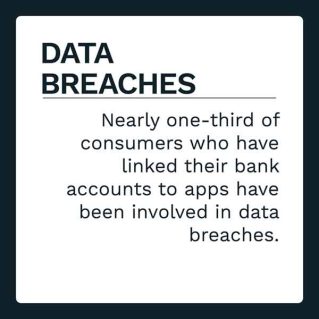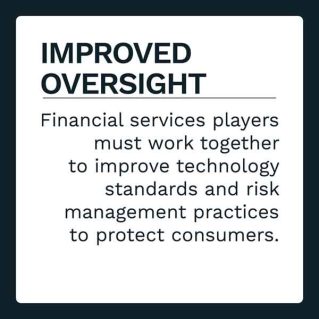As more financial transactions occur online and through mobile channels, fraud and security threats have inevitably grown as well, taking advantage of digital vulnerabilities. Consumers’ increasing use of digital channels means that many connect their bank accounts to these platforms, whether for payments, investing or budget tracking. The more consumers link their bank accounts, the more at risk they are for falling victim to data breaches.
Connected banking is helps banks and financial institutions (FIs) continue to improve customer experiences and help promote innovation in the banking space while also increasing the security of the overall digital experience. This new initiative will play a significant role as open banking — a trend that provides consumers with more control over how their bank-held financial data is shared — continues to proliferate in the payments world.
In the February edition of the Real-Time Payments Tracker®, PYMNTS explores how connected banking improves security, helping FIs better serve their customers and ultimately creating new opportunities for innovation.
Around the Real-Time Payments Space
A recent report shows that 65% of customers would be willing to use a mobile app to pay their bills, a figure that is helping drive the design of customer experiences on company websites. In addition, the report found that nearly one-third of consumers made an online bill payment, and 22% downloaded a company’s mobile app within the last year. The report also found that the pandemic has caused 56% of customers to change the way they communicate and engage with companies forever, and 73% of baby boomers are eng aging with companies digitally for the first time.
aging with companies digitally for the first time.
The security of backed-up and stored data is one of the biggest concerns of financial firms, according to a survey of 200 financial organizations. Despite these concerns, 68% said threat detection and incident response were part of their organizations’ vulnerability management programs, and 46% indicated they have done a thorough job identifying security baselines.
For more on these stories, visit the Tracker’s News and Trends section.
Dwolla on Harnessing a Collaborative Approach to Security, Compliance as Financial Innovations Take Shape
As the connected economy makes it easier for consumers and businesses far and wide to conduct business digitally, it will become necessary for all players involved to be looking out for each other and their customers. Keeping the movement of money safe will be the responsibility of FinTechs that serve as the pipeline in which money travels. Increasingly, the onus will be on them to ensure consumers can trust the framework on which their payments travel. In this month’s Feature Story, Dave Glaser, president and chief operating officer of FinTech firm Dwolla, talks about how open banking will help drive innovation for payment platforms, but only if players work together to keep the connected ecosystem safe and trustworthy for both merchants and consumers.
PYMNTS Intelligence: How Connected Banking Helps Reduce the Digital Economy’s Security Risks
A recent report found that the pandemic accelerated United States consumers’ adoption of digital banking, giving rise to a growing segment of customers who now prefer to forgo physical bank branches altogether. These digital natives — those who prefer to bank strictly through smartphones and other online portals and devices — made up approximately 32% of consumers, representing a sizeable increase from a year earlier.
This month’s PYMNTS Intelligence examines how connected banking improves security and the customer experience, helping FIs better serve their customers and creating new opportunities for innovation as the proliferation of digital channels for payments and money management continues.
About the Tracker
The Real-Time Payments Tracker®, a PYMNTS collaboration with The Clearing House, examines how connected banking is improving security and customer experience, helping FIs better serve their customers and ultimately creating new opportunities for innovation.

